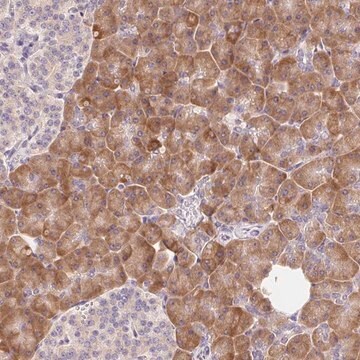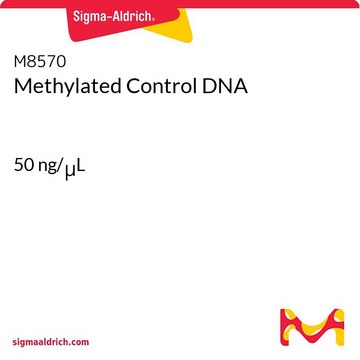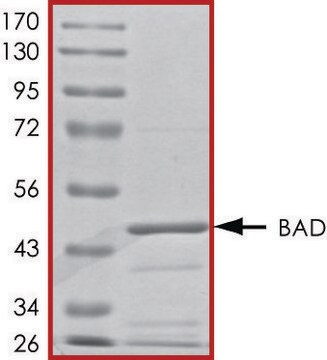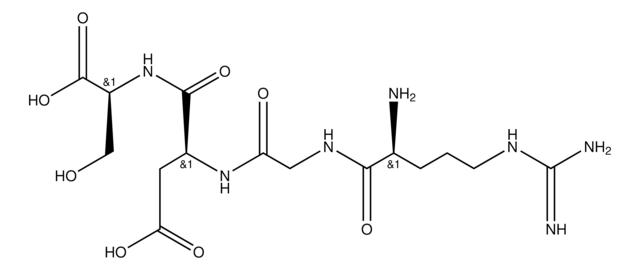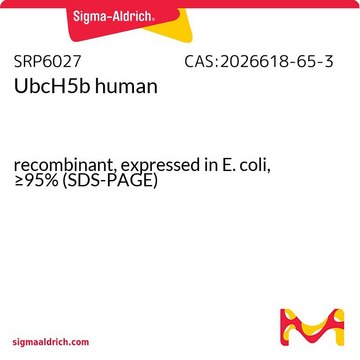SRP0441
UBE3A active human
recombinant, expressed in baculovirus infected Sf9 cells, ≥72% (SDS-PAGE)
Sinónimos:
HPVE6A, ubiquitin protein ligase E3A
About This Item
Productos recomendados
biological source
human
recombinant
expressed in baculovirus infected Sf9 cells
assay
≥72% (SDS-PAGE)
form
aqueous solution
mol wt
99.8 kDa
packaging
pkg of 20 μg
NCBI accession no.
UniProt accession no.
shipped in
dry ice
storage temp.
−70°C
Gene Information
human ... UBE3A(7337)
General description
Application
Physical form
signalword
Danger
hcodes
Hazard Classifications
Eye Irrit. 2 - Repr. 1B - Skin Irrit. 2
Storage Class
6.1C - Combustible acute toxic Cat.3 / toxic compounds or compounds which causing chronic effects
wgk_germany
WGK 1
flash_point_f
Not applicable
flash_point_c
Not applicable
Elija entre una de las versiones más recientes:
Certificados de análisis (COA)
¿No ve la versión correcta?
Si necesita una versión concreta, puede buscar un certificado específico por el número de lote.
¿Ya tiene este producto?
Encuentre la documentación para los productos que ha comprado recientemente en la Biblioteca de documentos.
Nuestro equipo de científicos tiene experiencia en todas las áreas de investigación: Ciencias de la vida, Ciencia de los materiales, Síntesis química, Cromatografía, Analítica y muchas otras.
Póngase en contacto con el Servicio técnico

